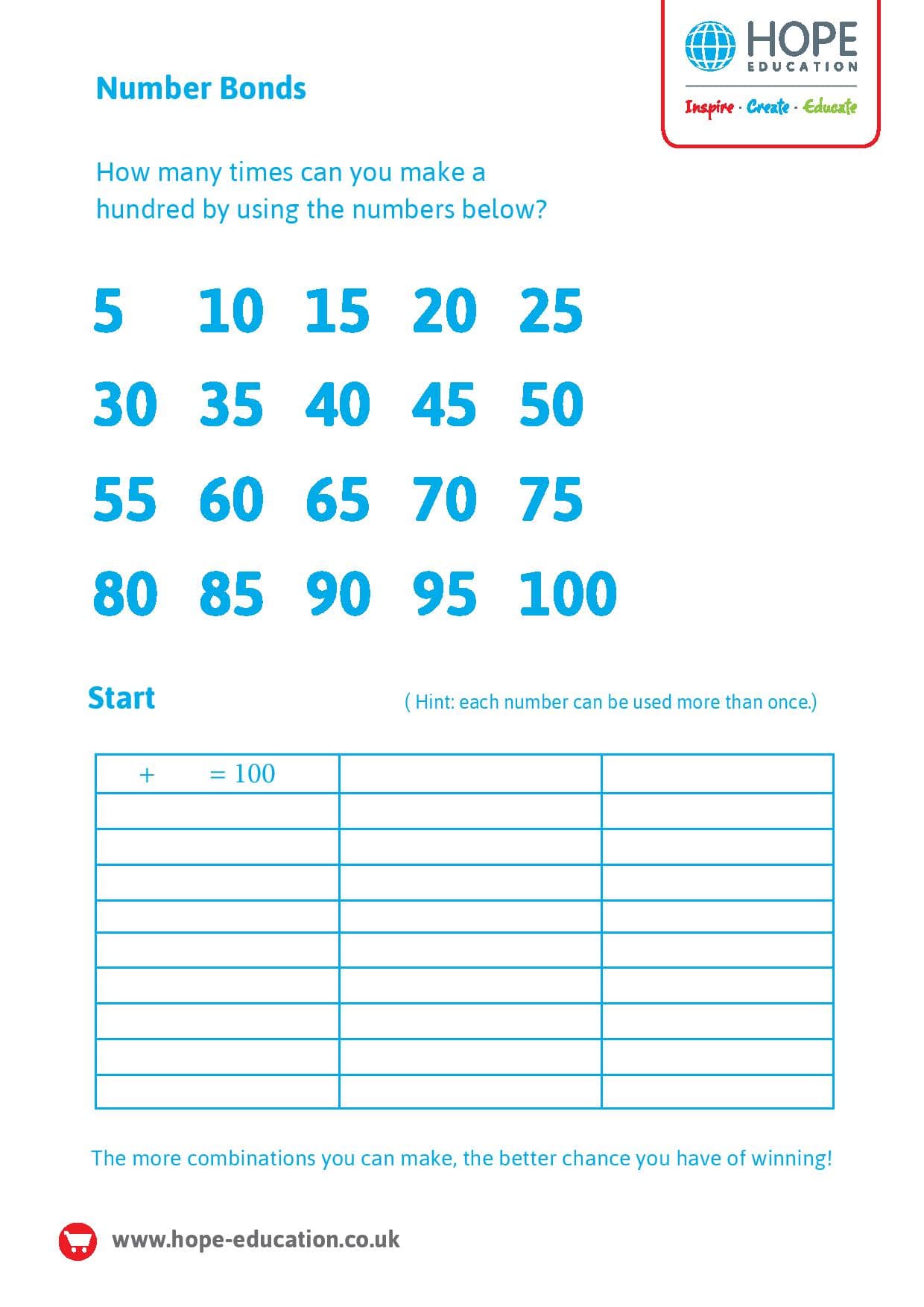Number bonds are a vital part of mental maths development. By the time you introduce 100, you’re getting to grips with some pretty big numbers.
This exercise, which can be completed individually or in groups, is a fantastic way to reinforce the relationship between numbers that add, subtract or divide together to make 100.
Number bonds to 100: Download our free worksheet
Download our free resource and share it with your class. For some friendly competition, see which person or group can get the most answers.
Use the sheet to ask children; how many times can they make 100 using only the numbers from the sheet?
What are number bonds?
Number bonds are an indispensable part of learning fundamental mental maths concepts like addition and subtraction. Put simple, number bonds are two numbers that, joined together (by addition, subtraction, multiplication or division), make another number.
Examples of number bonds to 100 using the worksheet above include:
- 95 + 5
- 70 + 30
- 55 + 45
- 20 x 5
Why are number bonds to 100 important?
Number bonds are part of the bedrock of our understanding of mental maths problems and calculations. The more practice and familiarity children get with the relationship between numbers, and how they interact to make another number, the more confident they will become in mental maths.
As their maths mastery progresses, they will be met with more significant problems. If the initial calculation aspect of the problem is solved as second nature, they can concentrate on the broader problem at hand.
As such, number bond knowledge enhances a child’s overall confidence in maths.
How does this worksheet help with number bonds?
There are dozens of ways to use the numbers above to make 100. Focused on addition and multiplication, this worksheet offers vital practice of common number bonds. You could even allow the class to go beyond 100 before subtracting another number to make 100.
It’s good to incorporate a little bit of competition and fun to number bonds. Place everyone in small groups and see how many different combinations they can come up with against the clock.
The challenge aspect for children and teamwork when working in groups can drive the class to understand more than they think they do!
